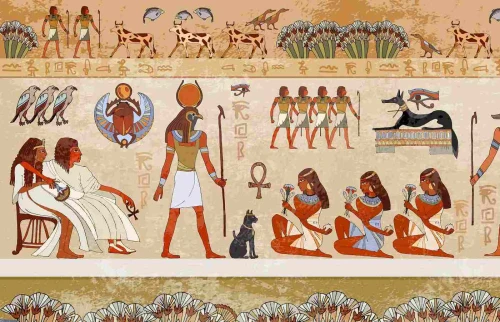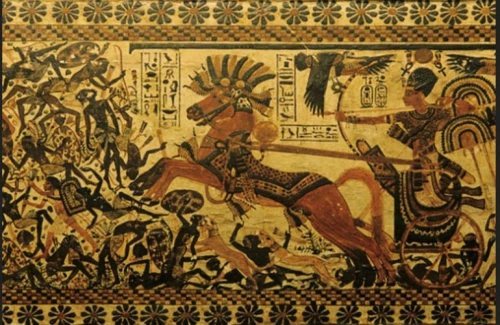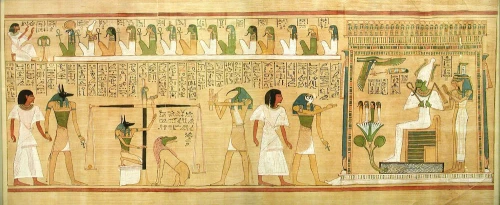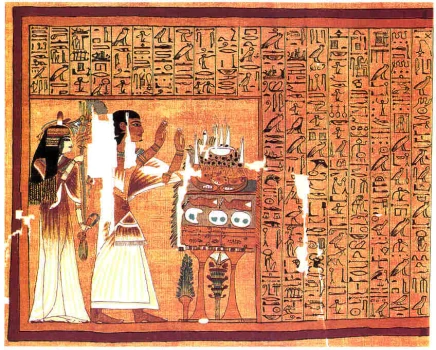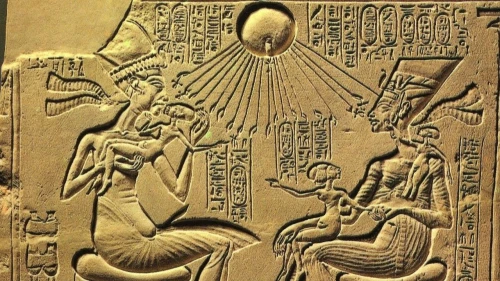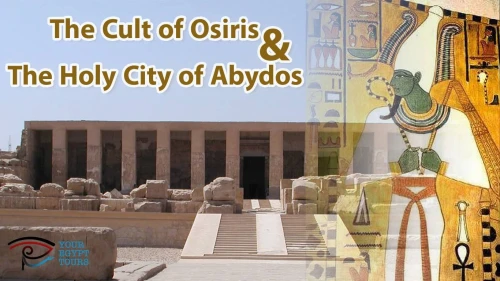
The most sacred city in all of Egypt, located on the West Bank of the Nile near modern Sohag. It was the main cult center of Osiris, the god of the dead, Abydos (known as Ibdju in ancient times) was the place to be buried in ancient Egypt. The tomb of king Djer, the third pharaoh of the 1st dynasty (c 3000 BC) was identified by later Egyptians as the tomb of Osiris himself. In the New Kingdom, Seti I built one of the most beautiful temples in Egypt, which remains one of the country's highlights.
Abydos was used as a necropolis from pre-dynastic to Christian times (c 4000 BC-AD 600), with more than 4500 years of constant use. Much of the site remains unexcavated.
According to the mythology, Osiris's body was cut into pieces and spread over Egypt, and legend had it that Osiris's head (some sources claim it was his phallus) was buried at Abydos.
The earliest buildings at Abydos are the tombs of Egypt's Pre-dynastic and Early Dynastic rulers. The first pharaohs came from a town nearby and were buried at Abydos. Today the oldest remains are from the temple of Osiris-Khentimentiu, dedicated to an ancient jackal god associated with Osiris-Khentimentiu means foremost of the westerners (the west was reserved for the dead) and stresses Osiris's role as a protective funerary god.
Excavations have unearthed early dynastic royal tombs and several wooden boats. A mud-brick tomb of the First Dynasty king, Djer was thought to be the tomb of Osiris in ancient times. This may have contributed to the growing popularity of the cult of Osiris. The most impressive monument to Osiris at Abydos is the OSIREION, chapel constructed of huge granite blocks and believed to be his false tomb or cenotaph. In the Middle Kingdom (2055–1650 B.C), people made pilgrimages to Abydos, and many left steles, or offering tablets, for Osiris inscribed with their names and prayers.
The mortuary temple of Seti I has an unusual L-shaped ground plan and was built primarily of limestone, with the occasional use of sandstone in different areas throughout the structure. The temple was completed after Seti I's death, by his son, Ramesses II, whose cartouches are found in certain parts of the temple, along with his characteristic sunk relief style, which is different from the very fine raised relief of his father.
The entrance to the temple is located on the northeast through a large pylon, now destroyed, leading into the first open court, which is also badly damaged. A stairway ramp on the main axis of the temple leads to a raised terrace with a pillared hall that, in turn, leads to the second court through three entrances at the back of the hall. The courtyards were decorated by Ramesses II with scenes from the battle of Kadesh and of the king offering to the gods. Another staircase ramp leads to a raised terrace containing the covered part of the temple. A pillared portico forms the facade and seven gates, all but the central one of which were closed by Ramesses II, lead to the first hypostyle hall. The hall has twelve pairs of sandstone papyrus columns with bud capitals. Another seven gates give access to the second hypostyle hall, which has thirty-six columns similar to the ones in the first hypostyle hall. This hall is beautifully decorated with scenes of Seti I kneeling before the gods.
The second hypostyle hall leads to seven chapels dedicated to seven gods, namely: the deified form of Seti I, Ptah, Re-Hor-Akhty, Amun-Re, Osiris, Isis, and Horus. The state of completion of these shrines indicates they were among the first areas in the temple to be decorated, and were, therefore, completed before Seti I's death. These chapels are decorated with scenes of the king offering to the gods and of him receiving the symbols of life and dominion, as well as royal insignia, in return. These scenes would have been complemented by the rituals that would have been performed by priests within the chapels' walls that served to transform the king into the god of death and resurrection, Osiris.
The Osiris chapel leads into a transverse area devoted to the cult of Osiris that includes two halls and two sets of chapels. The three small chapels to the right of the first hall are devoted to the gods Osiris; his consort, Isis, and their son, Horus. In ancient Egyptian religion, the living king represented Horus on earth, and when he died, he became Osiris, ruler of the netherworld. Beyond these three chapels is a secret chamber with two pillars that could only be accessed by the highest priests, for it was where the mysteries of Osiris were enacted.
The temple's southern extension contains more chapels, including those of the gods Ptah-Sokar and Nefertem, the "Hall of the Barques (where the barks used to carry the statues of the gods during ceremonies were kept), and the unfinished "Hall of the Butchers" (the temple slaughterhouse). The so-called "Gallery of the Ancestors", which contains the famous Abydos King List, is also located in this section. It is believed that this is where the temple rituals would have started. A procession of priests would then visit the seven chapels, reaching the small chapel of Osiris. The rituals served to transform the deceased king, Seti I, into the god Osiris, with whom deceased Egyptian kings were identified.
 English
English
 Spain
Spain

